Buffalo's "Million Dollar Park" - Erie Beach Park, Ontario.
Part 2: 1920-1930
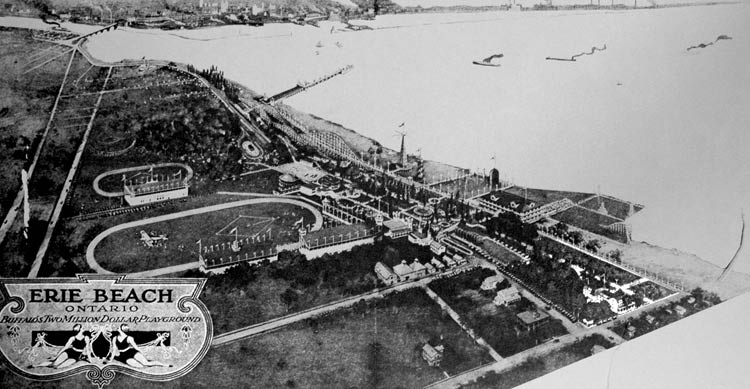
1920's advertisement for Erie Beach Park. The new Peace Bridge is visible at top left, showing how close to the border the park was situated. Frank Bardol expanded the park to 50 acres from its original 11 acres.
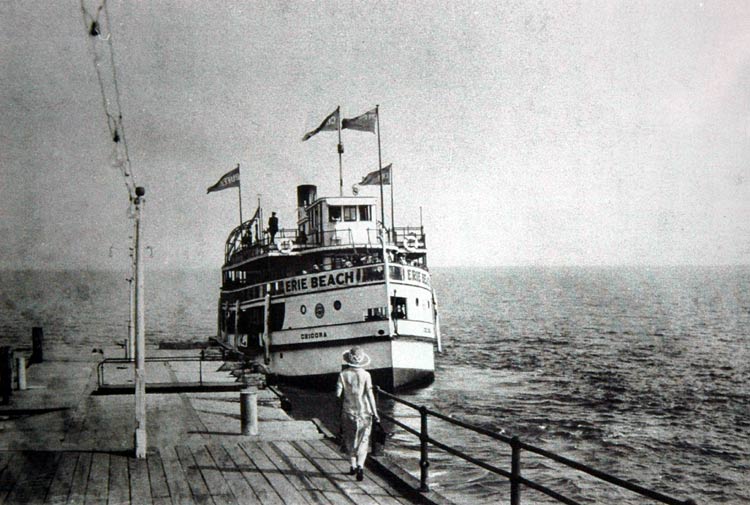
Looking at the end of the 1,000-foot long pier at Erie Beach Park.
For $.25 (adults) or $.10 (children), park goers could take a ferry 10 times daily from the foot of Main Street in Buffalo to the pier at Fort Erie Beach. Or they could depart from the foot of Ferry Street every 15 minutes. People could travel directly to Erie Beach's pier or take a ferry to Fort Erie and ride the 3-mile "Sandfly Express" train to the park.
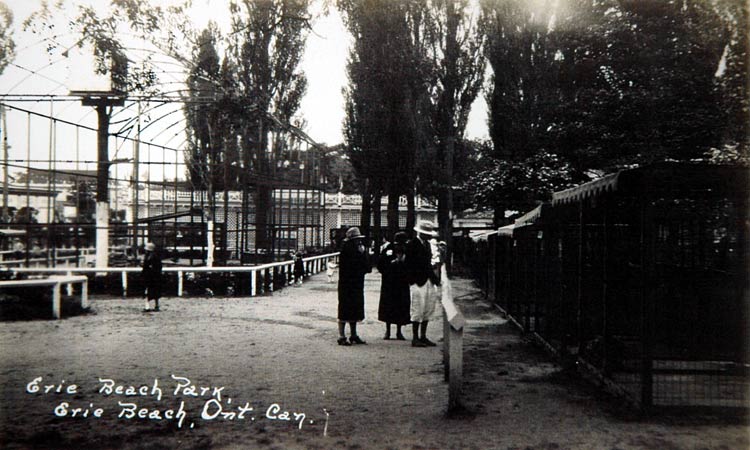
The Zoo at Erie Beach Park.
Frank Bardol invested nearly $500,000 in Erie Beach Park over ten years. The zoo at the Park was a seasonal exhibition, with animals transported from the Buffalo zoo for the summer. At left are the large "flying cages." patterned after those at the Bronx Zoo, where parkgoers could view hundreds of birds and watch daily shows put on by trainers.
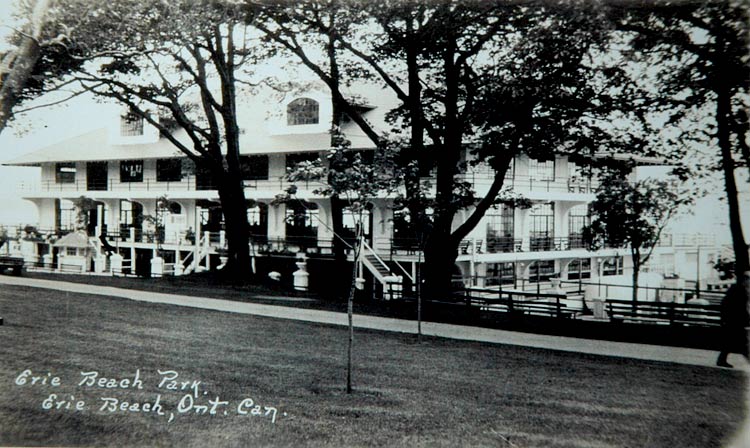
The Casino in the 1920's. This building was the symbol of the park and is the one most often recalled by people living today because it existed until 1975.
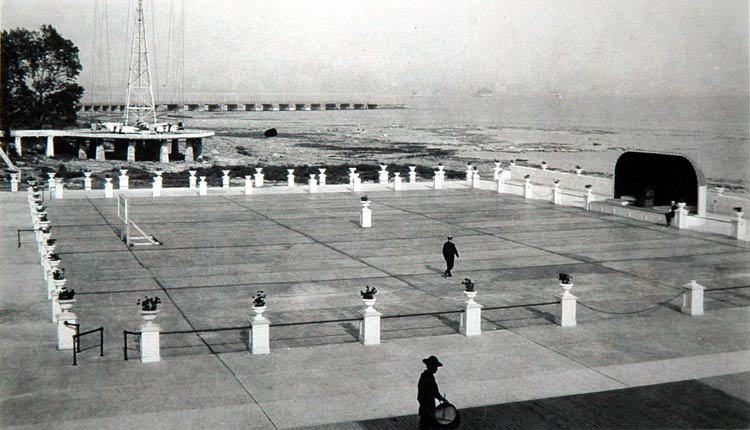
Outdoor theater/dance floor at Erie Beach Park.
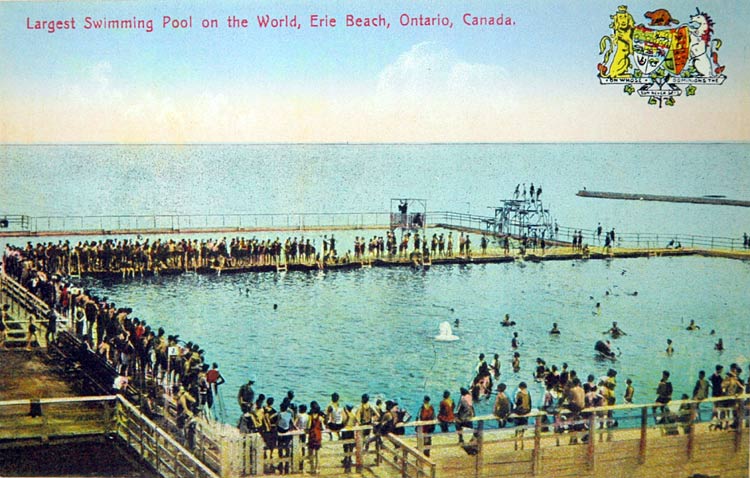
The swimming pool for adults (children's located behind it in this image)
The concrete swimming pool, installed to compensate for Erie Beach's lack of a sandy beach, was billed as the "largest in the world." Its sand-covered bottom sloped from 3 feet to 8 or 9 feet. Lake water was continuously pumped into it, which permitted the management to boast that the water was completely replaced every 24 hours.
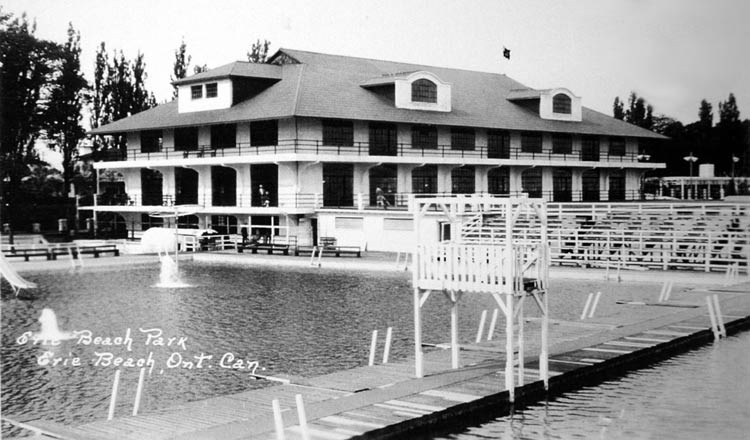
View of the casino and pool showing the water infusion jets and a slide (at left). Swimming suits were available for rent.
During Frank Bardol's tenure, the Blue Streak coaster was installed, as well as a Slide Tower, Laugh House, Dodgem Cars, Circle Swing, among other improvements. Crystal Beach was not sitting idle during these years. In 1924, the Crystal Beach owners created a seawall along the lake front of their property and removed an enormous sand dune to fill the area, expanding their available acreage by 600 per cent.
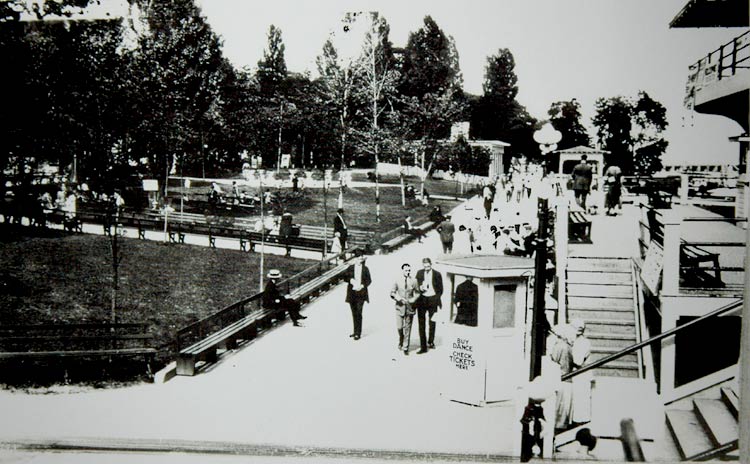
Promenade in front of the Casino.
Frank Bardol died suddenly in 1925 at age 56. The next year, Erie Beach Park was sold to another Buffalonian, J. Homan Pardee, for $1.5 million dollars. He brought new investment dollars to help Erie Beach compete with Crystal Beach.
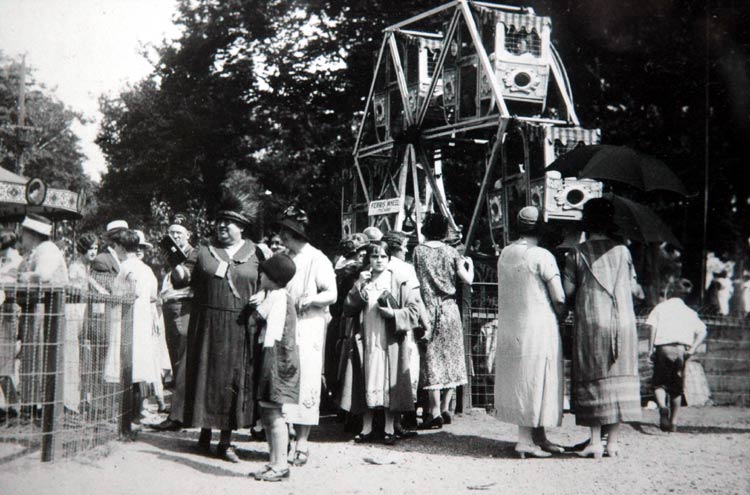
Park patrons near the children's rides at Erie Beach, 1920's.
Pardee spent $60,000 updating the big pier in 1927. He installed the double figure-eight Wildcat ride in 1928 to woo coaster fans from Crystal Beach's Cyclone which had been erected in 1926.
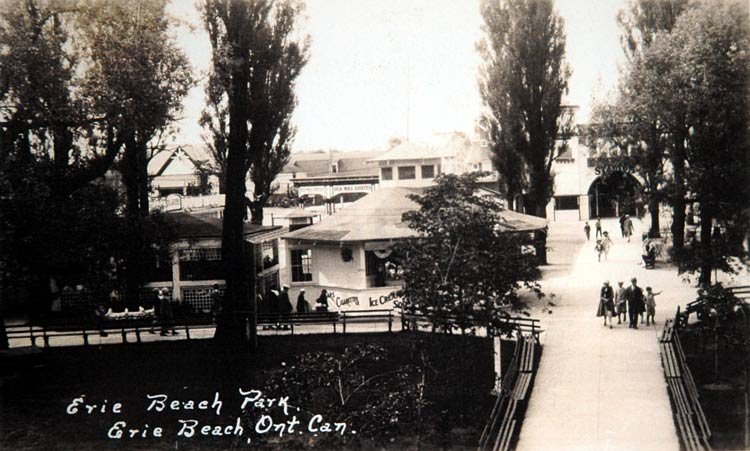
Unfortunately, the Depression which began in 1929 brought a precipitous decline in tourist income. That, plus the competition with Crystal Beach, led J. Homan Pardee to close Erie Beach Park on Labor Day, 1930. (See the newspaper article about the demolition here.) He sold the park's equipment, some of which went to Crystal Beach. Although there were plans to create a summer residential community that would utilize the Erie Beach Hotel and swimming pools and Casino, the continuing economic climate did not permit this. The elegant Hotel burned in 1935. The Casino, solidly built of concrete, stood for many years until it was demolished in 1976 for safety reasons.
Although Crystal Beach filed for bankruptcy in 1931 in order to reorganize, it was to continue with great success through the 1940's, 1950's and 1960's, declining thereafter until finally closing forever in 1989.
Part of the wooded Erie Beach Park land has been included in the Fort Erie-Port Colborne Friendship Trail. It is accessible for bicyclists, walkers, picnikers and those who wish to sit in the quiet shade by the lake on their day off.
Below is a video of images showing Erie Beach Park as it was followed by similar perspectives from 2005. Click the arrow to begin the video.
Grateful thanks to Erin Wilson, Curator of Structural Heritage, Fort Erie Museum; Linda Bleichfeld, collector who generously permitted copying of most of these images; Linda Banas and Barb Goldman for coordinating a site visit and providing spring photos of the Erie Beach Park grounds.
Reference materials include Crystal Beach: The Good Old Days, by Erno Rossi; a detailed website by a coaster enthusiast with many references to rides; Waverly Beach Chronicles, by Debby Cohen; Many Voices: A Collective History of Fort Erie, published by the Fort Erie Museum Board; and newspaper articles from the time.